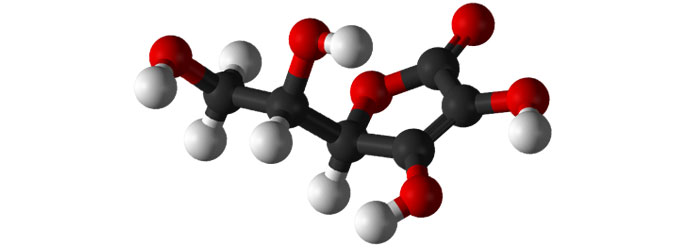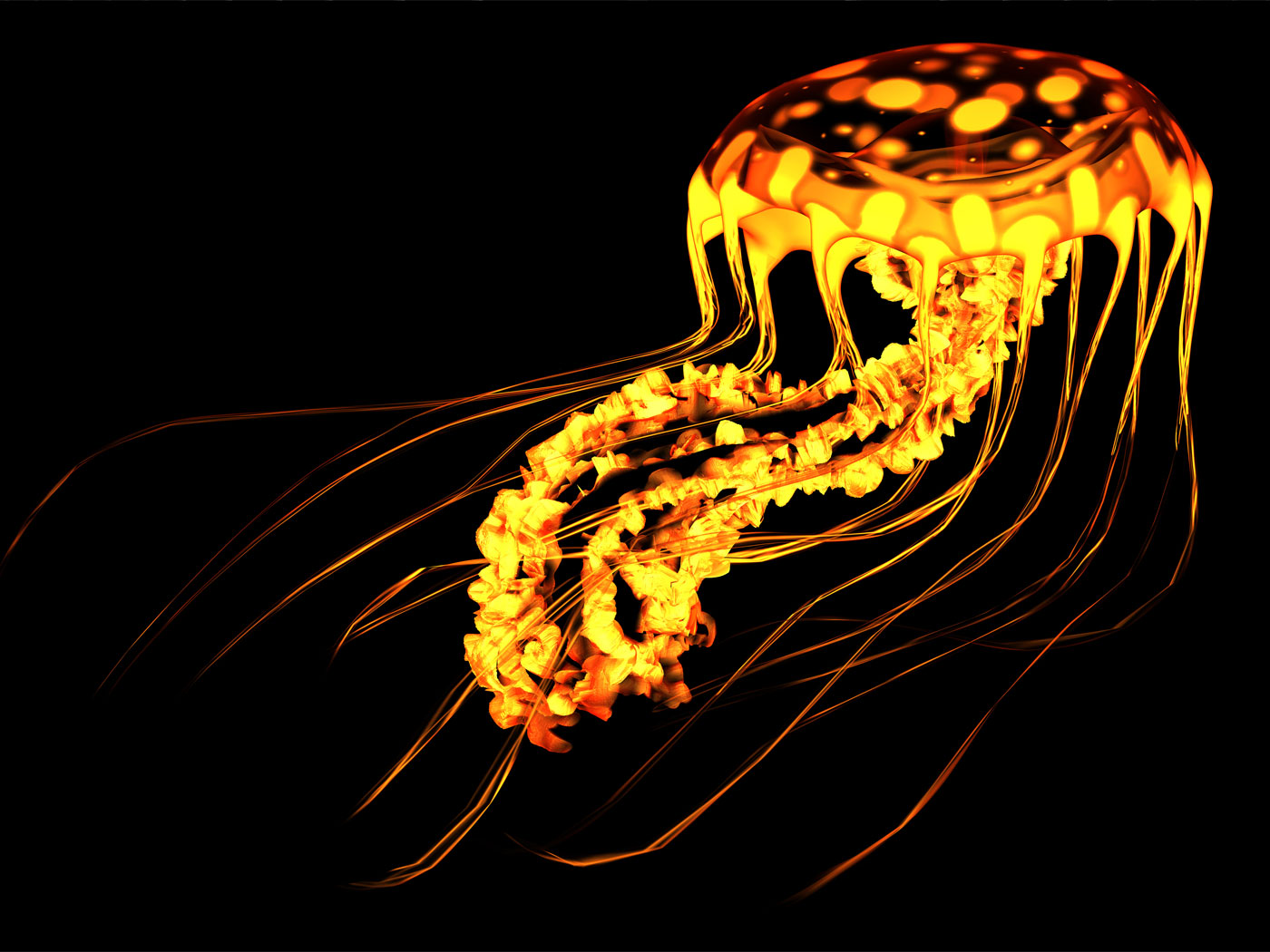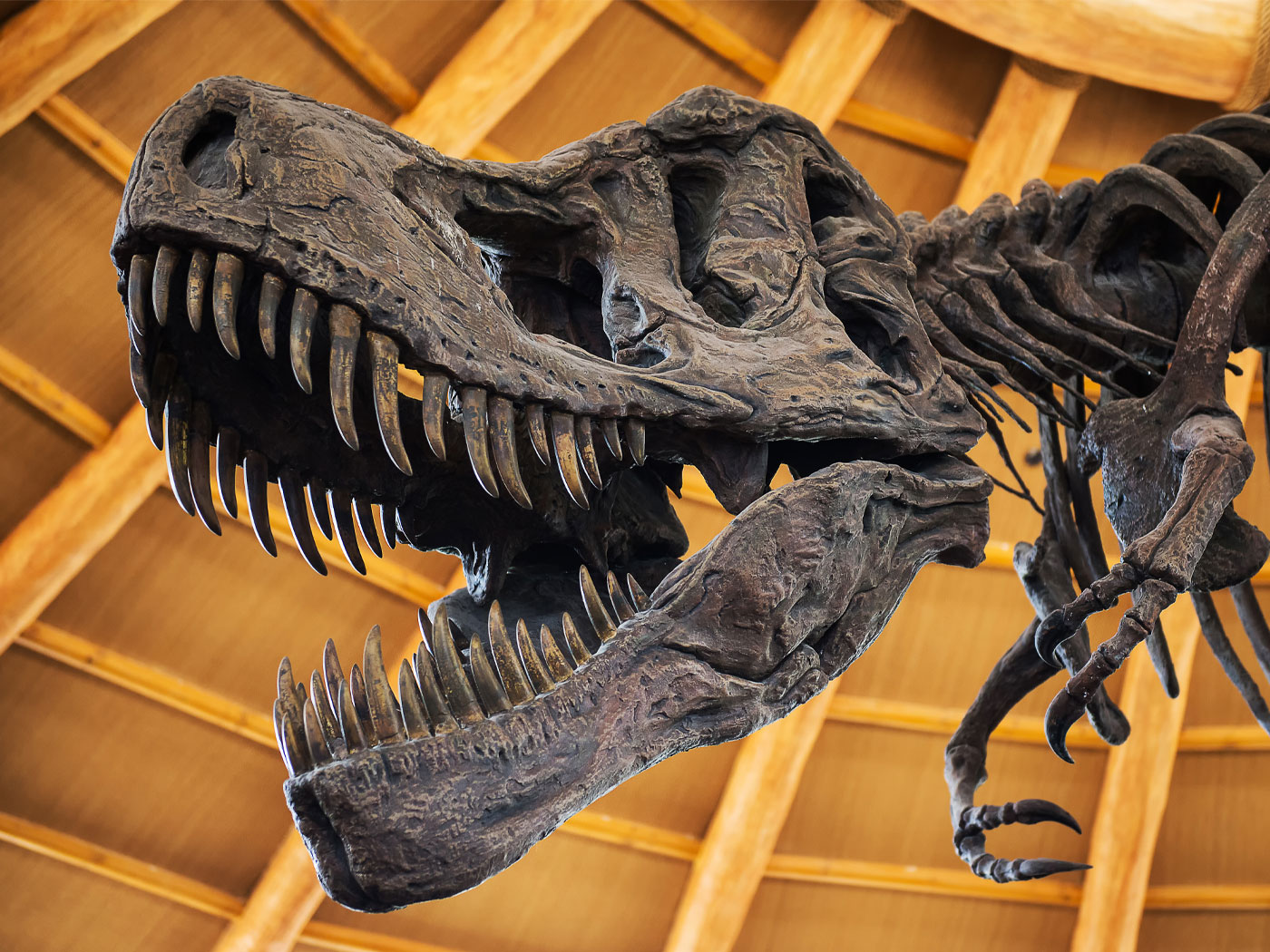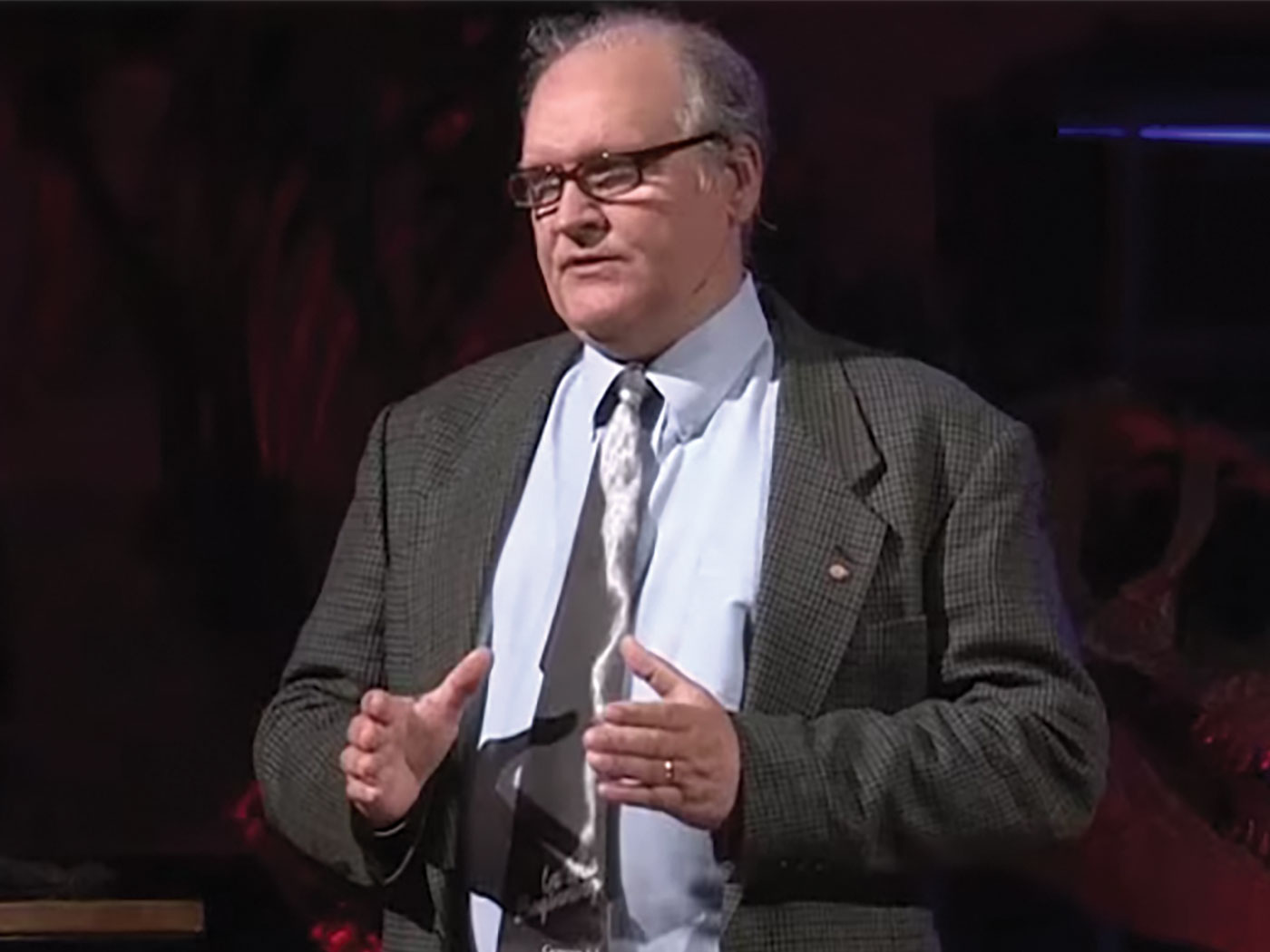Every winter, as the influenza (flu) season spreads across America, people flock to stores to get vitamin C tablets to deliver them from the symptoms of the common cold. Vitamin C, or ascorbic acid, is an important cofactor that stimulates the immune system and apparently assists in shortening the length of illness and the severity of flu symptoms (although the exact effects of vitamin C on the flu are still debated). In addition to stimulating the immune system, vitamin C has been identified with several other functions in the human body including production of an important protein, collagen, found in several types of connective tissue including bone and cartilage (Garrett 1999). A deficiency in vitamin C can cause scurvy, a disease that results from deterioration of connective tissue, and prolonged lack of vitamin C can even lead to death (Marieb 1998). Humans are unable to synthesize vitamin C, but are able to store a 30-day supply of this important nutrient. To maintain this supply, a person must ingest about 60 mg of vitamin C each day, or approximately the amount of vitamin C in an average size orange. Although humans, apes, monkeys, fruit bats, and several species of fish (including trout and salmon) are unable to synthesize vitamin C, many other animals are quite capable of making their own vitamin C and do not need to eat fruit and vegetables to acquire this nutrient (Garrett 1999).
Many people, especially in northern climates during the winter, have suffered from a lack of vitamin C throughout history. It's very likely that many people have died from scurvy as a result of being unable to provide themselves with fresh fruit and vegetables during the winter months. If vitamin C is such an important nutrient, and many other animals possess the ability to synthesize it, why didn't God give humans the biochemical pathways to synthesize vitamin C? There are two obvious possibilities why people today cannot synthesize vitamin C: (1) Humans were created without the ability to synthesize vitamin C, or (2) they lost the information from genes that code for the proteins necessary to synthesize vitamin C.
The first possibility is very simple and there is logical Biblical and scientific support for this scenario. From the beginning, Adam and Eve were not created with a biochemical pathway for making vitamin C and were dependent on eating fruit, the best source of vitamin C. We know they were instructed to eat any fruit in the Garden of Eden except fruit from the Tree of the Knowledge of Good and Evil, and yet had access to the Tree of Life. Adam and Eve lived in an environment with many similarities to heaven. However, unlike those in heaven, Adam and Eve were commanded to be fruitful and multiply, and produce little Adams and Eves. Human reproduction would require nutrients to build tissues for the child during and after pregnancy, an indication that Adam and Eve had to eat to provide for their developing children and also for the maintenance of their own bodies. Furthermore, today nutritionists recommend a diet high in fruit and vegetables as being the healthiest source of nutrients, which is consistent with what God instructed Adam and Eve to eat. It is possible that God made Adam and Eve (and us) dependent on fruit as a source of vitamin C as a reminder that they were dependent on Him for food that must be eaten to stay healthy.
Is it possible that Adam and Eve did have the information in their genes to produce the enzymes necessary for synthesizing vitamin C? Are there any remnants of those genes that can be identified in the human genome today? What would a non-functioning remnant of a gene look like if scientists found one? One thing is sure today -- if Adam and Eve did have the information in their genes to make vitamin C, health problems with scurvy recorded as far back as the Roman Empire (Davies 1970) indicate this information disappeared long ago from the human genome.
There are sequences of DNA (in the genome) that are claimed to be nonfunctional remnants of presently functional genes. These sequences of DNA are called pseudogenes, and there are several criteria used to distinguish pseudogenes from functional genes. A pseudogene DNA sequence typically is greater than 70% similar (homologous) to a functional gene but lacks a promoter that would enable the sequence to be transcribed into RNA and finally a protein (Zhang et al. 2003). Pseudogenes also typically have disruptions to the "coding region," such as stop codons that prematurely end the translation of the gene into a protein (Zhang et al. 2003). Pseudogenes are believed to vary significantly from the original functioning gene because they are no longer under selective constraints. In other words, since the cell is no longer using this stretch of DNA, it accumulates mutations at a fast rate -- degrading the original functional gene sequence into a pseudogene (Karp 2002). Many pseudogenes are identified by comparing similar sequences in the genome to functional genes within an organism. For example, in humans there are many functional genes for ribosomal proteins, and there are several human ribosomal pseudogenes that meet the criteria mentioned above (Zhang et al. 2003). To find a pseudogene for vitamin C in the human genome, a comparison would have to be made between the human genome and the genome of an organism that had a functional gene for synthesizing vitamin C.
In 1994, a group of Japanese scientists identified a DNA sequence in humans that had many similarities to the rat gene that codes for the enzyme (L-gulono-γ-lactone) that catalyzes the last step of vitamin C synthesis (Nishikimi et al. 1994). The human pseudogene sequence discovered has four of these 12 exons. (Exons are the modular coding regions of a gene.) These four human exon sequences have many characteristics of a pseudogene. There is a 70-80% sequence homology between the rat and human sequences depending on the exon, and two stop codons. Later analysis confirmed that these four exons are present in other primates as well (Inai, Ohta, and Nishikimi 2003). Humans are missing only the final enzyme for the last step in synthesizing vitamin C, but have all of the other enzymes necessary to convert glucose into vitamin C.
It would seem from the evidence of a potential human pseudogene for L-gulono-γ-lactone and the presence of the other enzymes necessary for synthesizing vitamin C that humans have lost the ability to make vitamin C. However, there is more to this story. There are only four exons for the gene encoding L-gulono-γ-lactone in humans. Two-thirds of the homologous rat gene is completely missing. Most pseudogenes represent 90% of the entire functional gene. This DNA sequence, labeled as a pseudogene, might have an entirely different function than the rat gene.
Stating that only the last enzyme is missing for the pathway to convert glucose to vitamin C might imply to the untrained individual that there is a biochemical pathway that leads to a dead end. Actually, the biochemical pathway that leads to the synthesis of vitamin C in rats also leads to the formation of five-carbon sugars in the pentose phosphate pathway present in virtually all animals (Linster and Van Schaftingen 2007). There are several metabolic intermediates in this pathway illustrating that these substances can be used as precursors for many compounds in the cell. In the pentose phosphate pathway, five-carbon sugars are made from glucose (a six-carbon sugar) to be used in the synthesis of DNA, RNA, and many energy producing substances such as ATP and NADPH (Garrett 1999). Animals that synthesize vitamin C can use both pathways illustrated in the simplified diagram below. Humans and the other animals "less fortunate" than rats only use the pentose phosphate pathway.

There is no dead end or wasted metabolic intermediates, and there is no need to have the enzyme to make vitamin C since humans are able to get all of the vitamin C they need from food substances.
Thousands of human pseudogenes have been catalogued, but in spite of the similarities to functional genes, the exact role of pseudogene sequences in the genome are not known by any scientist. It is not necessary to assume that pseudogenes are remnants of once functioning genes that have been lost and now clutter the genome like junk in a rubbish heap. It is possible that these regions of DNA do have a role in human and animal genomes and this role has not been discovered yet. Over 100 years ago, Robert Wiedersheim hypothesized that the human body had more than 80 organs that lacked any function simply because it was unknown at the time what these organs did (Wiedersheim 1895). They were assumed to be vestigial or "junk" leftovers from evolutionary history and several of these organs are still presented this way in biology textbooks today. The science of genomics is in the same position today. Just because scientists do not currently know the function of a portion of DNA does not mean that it does not have any function and therefore it is an evolutionary leftover. It has been reported that pseudogenes play a regulatory role in yeast for the functional genes that they share sequence homology with (Hirotsune et al. 2003). There needs to be more research in this area to verify these claims, but at least there are some indications of a functional role for pseudogenes in the human genome.
So, did Adam and Eve have a gene to code for an enzyme that would synthesize vitamin C and was this information eventually lost as a result of the curse, or were they simply created without this information in their genomes? That question might not get answered until Christ returns. But in the meantime, humans require plenty of vitamin C in their diet -- so have an orange!
References
- Davies, R. W. 1970. Some Roman medicine. Med Hist 14 (1):101-6.
- Garrett, R. H., and C. M. Grisham, 1999. Biochemistry. 2nd ed. New York: Saunders College Publishing.
- Hirotsune, S., N. Yoshida, A. Chen, L. Garrett, F. Sugiyama, S. Takahashi, K. Yagami, A. Wynshaw-Boris, and A. Yoshiki. 2003. An expressed pseudogene regulates the messenger-RNA stability of its homologous coding gene. Nature 423 (6935):91-6.
- Inai, Y., Y. Ohta, and M. Nishikimi. 2003. The whole structure of the human nonfunctional L-gulono-gamma-lactone oxidase gene -- the gene responsible for scurvy -- and the evolution of repetitive sequences thereon. J Nutr Sci Vitaminol (Tokyo) 49 (5):315-9.
- Karp, G. 2002. Cell and Molecular Biology. 3rd ed. New York: John Wiley and Sons.
- Linster, C. L., and E. Van Schaftingen. 2007. Vitamin C Biosynthesis, Recycling and Degradation in Mammals. Febs J 274 (1):1-22.
- Marieb, E. N. 1998. Human anatomy and physiology. 4th ed. Menlo Park: Benjamin Cummings.
- Nishikimi, M., R. Fukuyama, S. Minoshima, N. Shimizu, and K. Yagi. 1994. Cloning and chromosomal mapping of the human nonfunctional gene for L-gulono-gamma-lactone oxidase, the enzyme for L-ascorbic acid biosynthesis missing in man. J Biol Chem 269 (18):13685-8.
- Wiedersheim, Robert. 1895. The structure of man: An index to his past history. 2nd ed. Translated by H. and M. Bernard. London: Macmillan and Co.
- Zhang, Z., P. M. Harrison, Y. Liu, and M. Gerstein. 2003. Millions of years of evolution preserved: a comprehensive catalog of the processed pseudogenes in the human genome. Genome Res 13 (12):2541-58.
* Dr. Daniel Criswell has a Ph.D. in Molecular Biology.
Cite this article: Criswell, D. 2007. Adam and Eve, Vitamin C, and Pseudogenes. Acts & Facts. 36 (5).














